Llanes, Asturias
sandwiched between the mountains and the deep blue sea
Llanes is a great wee find for those from outside Spain who might know of higher-profile Asturian locations like Oviedo, Gijón or even the Picos de Europa. Llanes is in the east of the region, on what is known as the Green Coast. We decided to visit it while staying in the little neighbouring coastal villages of Buelna and Pendueles. These are about 15 minutes east of the town on the train. We figured that Ribadesella, which was an hour away by train, could wait for another time.
We weren't disappointed by the seaside hideaway, sandwiched between cliffs and sea, and the Sierra de Cuera. This mountain ridge is just inland, to the south of the town, blocking views of the more-famous Picos de Europa. The Sierra though, is its own impressive sight. So, every direction you look has something stunning to see.

Ancient city walls of Llanes
The villages of eastern Asturias
Llanes is pretty close to a quaint area where we stayed on a three-day jaunt to the region. This eastern Asturian pocket contains the villages of Buelna and Pendueles, which you can read about here. Llanes is quite a bit bigger, with about 13,000 residents. It has a lot more to do with more amenities, so if you don't fancy paying restuarant prices, you can find shops where you can buy the raw materials for sandwiches. Llanes is also a lot less famous than other parts of the region, so it isn't overrun by tourists. Mind you, it does get a fair bit of internal tourism from other parts of Spain.
Sunny with a chance of rain?
One thing that often irks visitors from northern European countries to the northern Iberian coast is that it rains sometimes. This might also come with a few contradictory comments, like praising the region for the green countryside. Well, you can't have green scenes without a bit of rain, can you now? Whenever we visited the area though, the sun was splitting the rocks and there wasn't a drop of rain. We ended up feeling that we had discovered something far superior to your everyday Mediterranean English-speaking resort.
Llanes and the Green Coast
The town forms part of the Asturian coast, which forms part of the Costa Verde, or the Green Coast. Llanes sits easterly and is accessible on trainlines which run from the French border as far as Ferrol in Galicia. However, as mentioned in our article about Buelna and Pendueles, which you can read by clicking here, the train requires patience. There are time spans to the journeys and the occasional delay. There is the bus though, which you can check at this link, and Alsa's buses are a good option. The bus will get you there more quickly while still enjoying the countryside scenery.
Assuming visitors to somewhere named the Green Coast would expect and not mind some rain, light rain jackets are welcome accessories. I say light rain jacket as the temperatures can rival even the more consistently dry Mediterranean coast. The rain can be rare, but just bear in mind that it might decide to pay a visit.
Llanes, in the shadow of the mountains
Exiting the station at the end of town and crossing a scenic park toward the town's cliffs overlooking the Cantabrian Sea, you can feel the heat. Today, there is no need for that rain jacket. Looking behind you and inland over the train station, you can see the ridge of the Sierra del Cuera. This rises several hundred metres above the rest of the landscape, giving you the impression of being in a coastal corridor. The train line gives you full access to that corridor, though going inland looks like it might require quite the effort. This is true as on the other side of the high ridge lie the even-higher Picos de Europa. This famous tower of peaks forms a seemingly-impenetrable natural border between the Celtic kingdom of Asturias and the flatter Iberian inlands of Castile.
Asturias' mountainous terrain has served it well as a natural border to the south. The region stayed independent for the most part from various invasions, conquests and competing interests that went to and fro across the cental Castilian plain. These intrigues have played out over many centuries on the Iberian Peninsula, as the people's everyday life has continued.
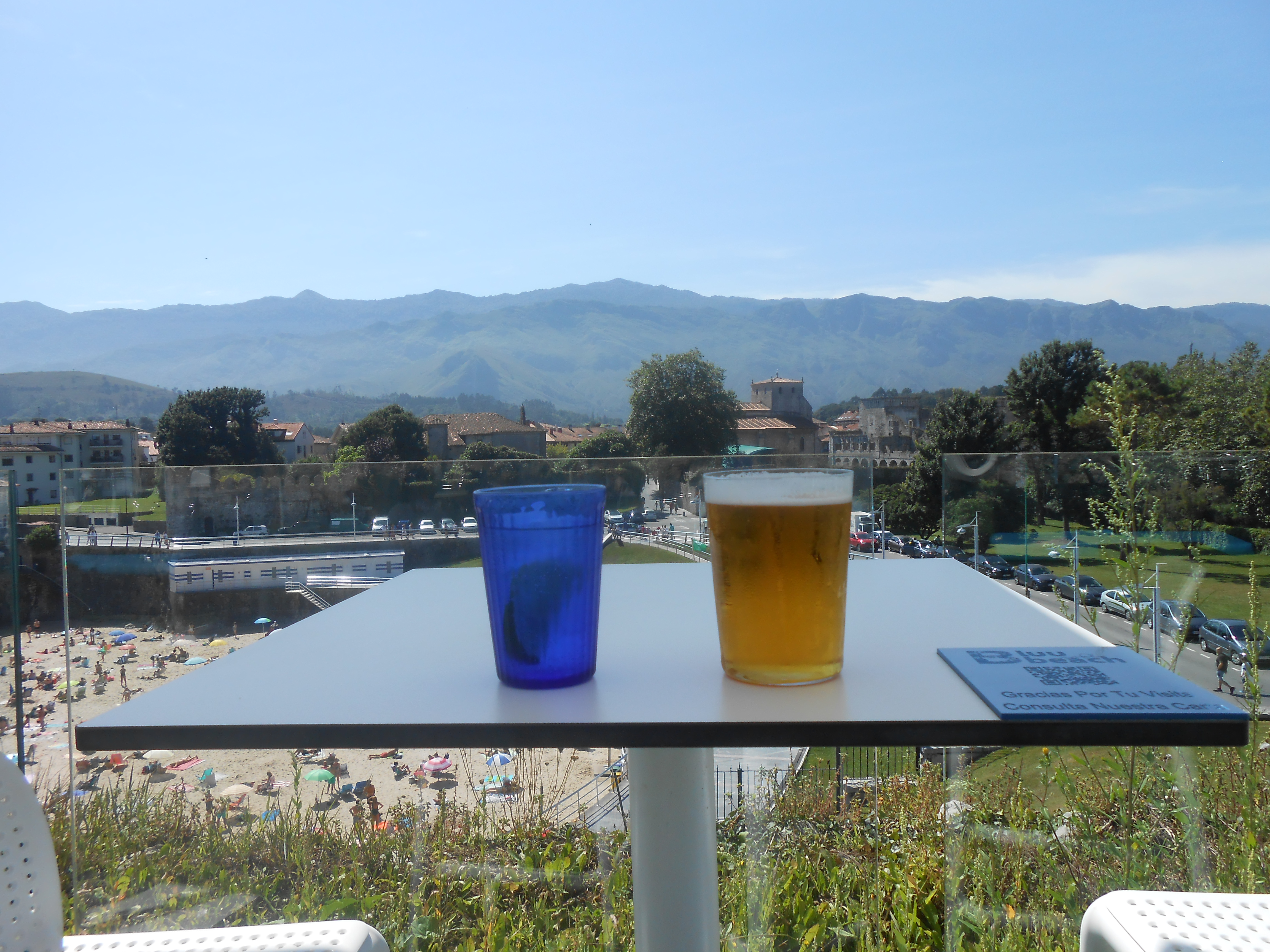
Bluu Beach Café Bar in Llanes, Asturias. On the horizon is the Sierra del Cuera mountain ridge
So, we're spoiled for scenery surrounding the town and strolling along the cliff walk, you can admire the mountains and the craggy Asturian coast. This coastline has a mythical feel, with eroded rock formations, and the cliff walk boasts ancient battlements. These protect from the dangers of the sea, be they from human foes or simply falling off the side.
The clifftop chiringuito
Following the cliff walk eastward toward the town, you will see another fine example of an Asturian beach in a little cove. This is one of several beaches in and around the town, with soft sands and high surrounding rock formations sporting chiringuito beach bars. Bluu Beach Café Bar sits on the overlooking rock and gives a birds-eye view of some of the city walls as well as the beach.
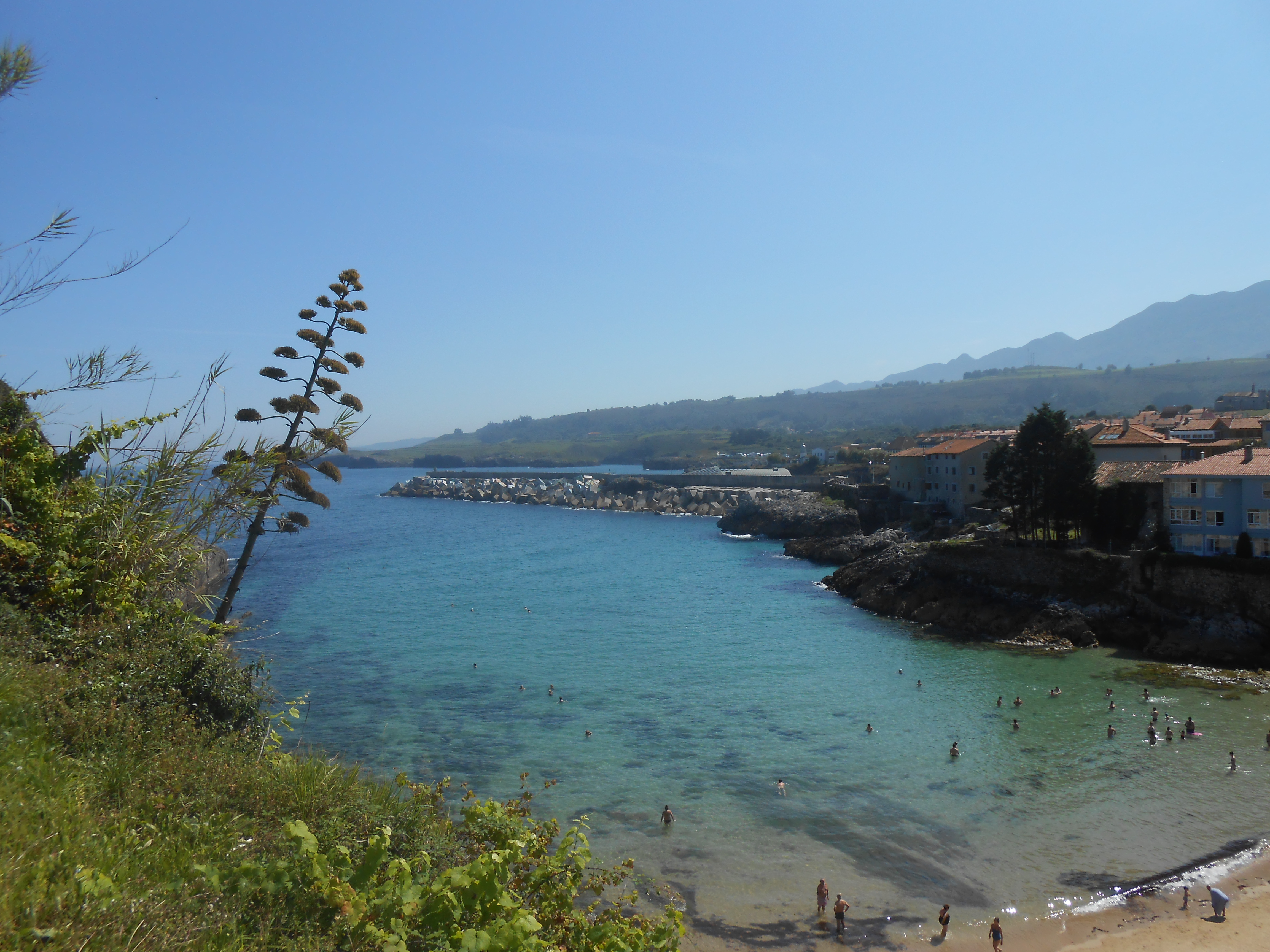
Sablón Beach in Llanes, another enchanting wee Asturian cove
If you head on round from this part of town, keeping close to the sea, you will find a lot of history. This is something we were able to gaze over while in the Bluu Beach Bar. More closely, you can appreciate the amazingly well-preserved historical fortifications, suggesting a coastal military stronghold.
Passing the Sablón Hotel, we stop for something to eat in Bar Rubi on the other side of the street. An incredibly friendly little restaurant on a corner, you can eat the local cuisine here. However, we opt for burgers, the trans-national dish of the western world. After a large lunch at a decent price, we head for the side of the sea to get a lungful of fresh air. Here you will find a bit of history to chew on as you digest your food.
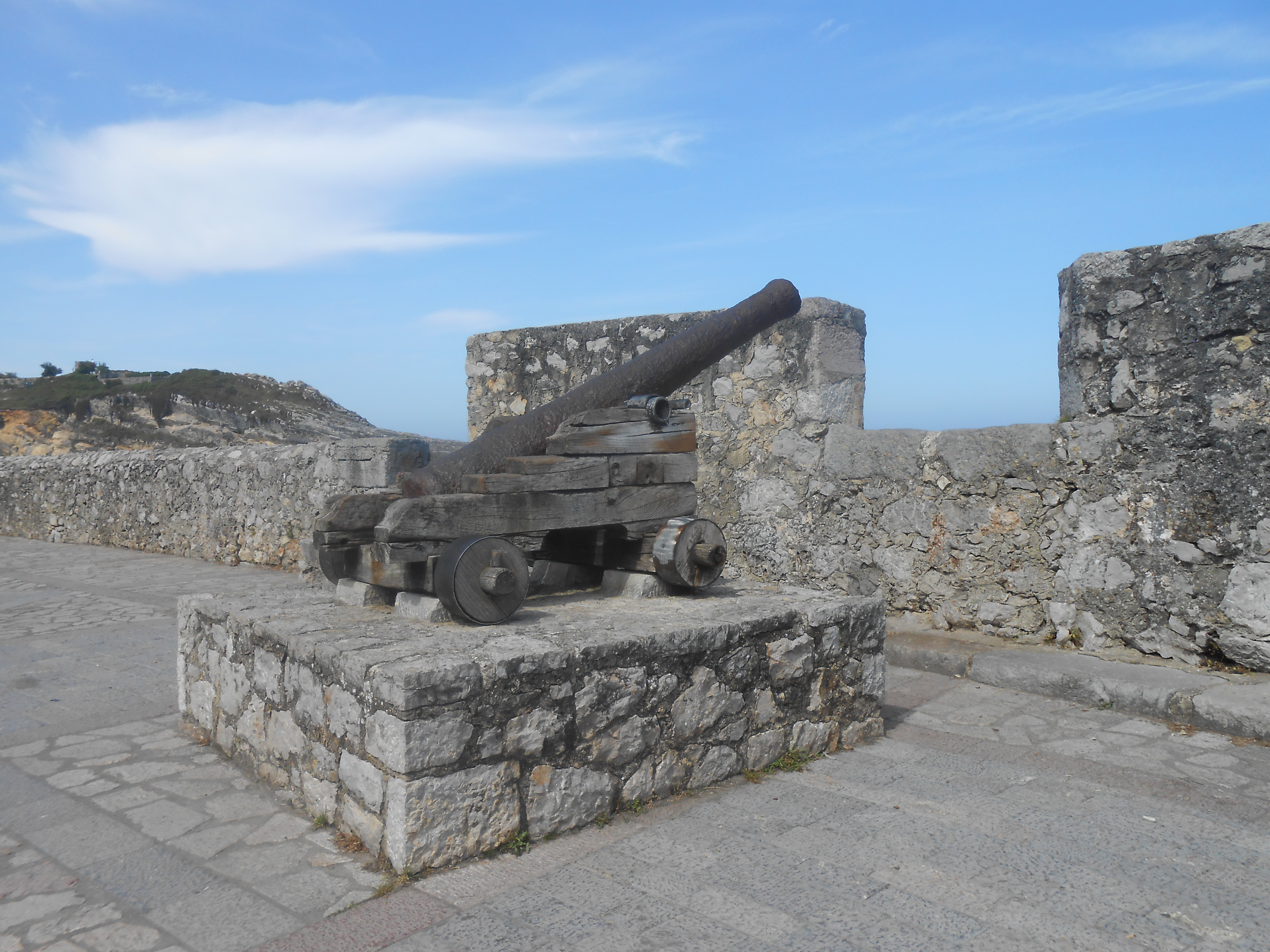
The guns protecting the coastal fortress of Llanes
Pirates and fishermen
Through the battlements, the remaining cannons peer, overlooking the Cantabrian Sea, awaiting seaborne enemies of bygone times. Maybe the French, maybe English pirates, who knows? If you like to escape the modern world and imagine yourself in a bygone age, this is your place.
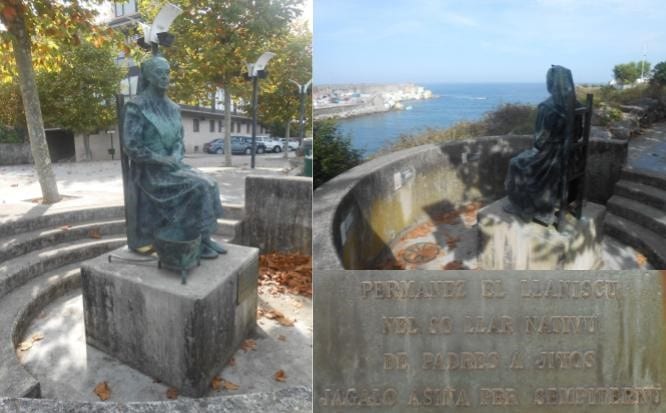
The Fisherman's Wife statue, overlooking the port of Llanes
One thing I noticed over in the Basque Country, especially in the port of Bermeo, was the presence of statues. These often depict everyday people restlessly overlooking the sea, awaiting the return of loved ones from fishing or whaling missions. You can read about Bermeo and its people's history at this link.
Llanes has its own version of these sculptures in the form of the Fisherman's Wife statue. This depicts a lady sitting above the port, looking out maybe for her husband or children. Whaling and fishing has been this coastline's economic backbone for centuries, and is still noticeable around the place. The sea is reflected in the cuisine and sculpture of these coastal communities.
Llanes' ancient walls and citadels
Retreating a little from the waterside towards the town centre, you will find a finely-maintained old historical quarter. A casco viejo is what they often call the historical area in many towns over here. These old-town areas vary in the time of history they want to emulate. Some old towns, like in Bilbao, which you can read about here, have a look which to my eye makes you think of the nineteenth century.
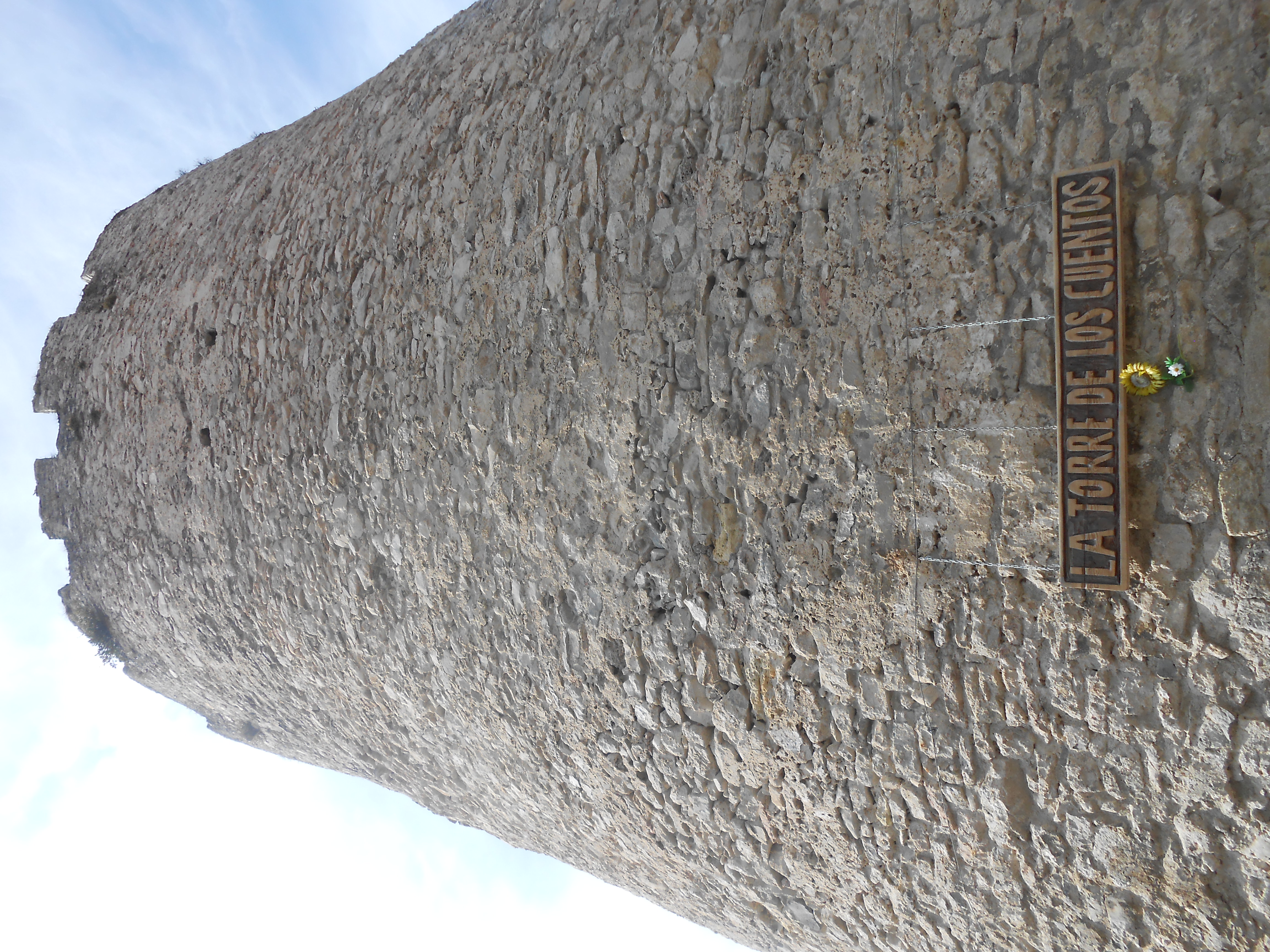
The Medieval tower in Llanes
The old quarter of Llanes though, has excellently-preserved walls and towers dating centuries previous to that though. There is a medieval tower and walls winding through, round and across the narrow streets. This has been mentioned in our article about the neighbouring villages of Pendueles and Buelna, which you can read at this link. There would seem to be laws protecting the historical architecture across the country, as tourism is an economic cornerstone nationally. Each town protects and takes advantage of these historical details to promote local tourism and commerce. It results in some very interesting places, with pedestrianised streets bustling with cafés, bars and restaurants around ancient walls, museums and churches. Modernity therefore, marches on, albeit in the shadow of the ancient world.
You can obviously get a good feel for the old town by walking through the area of course. There is also a tourist train though, which departs from Llanes' riverside, snaking through the streets over a half-hour tour. We did both and you really do get the feeling of being in a centuries-old town. There is a little chapel dedicated to San Roque, which used to be a hospital for the pilgrims on the Camino de Santiago, and the pilgrims' shell can be seen around the place.
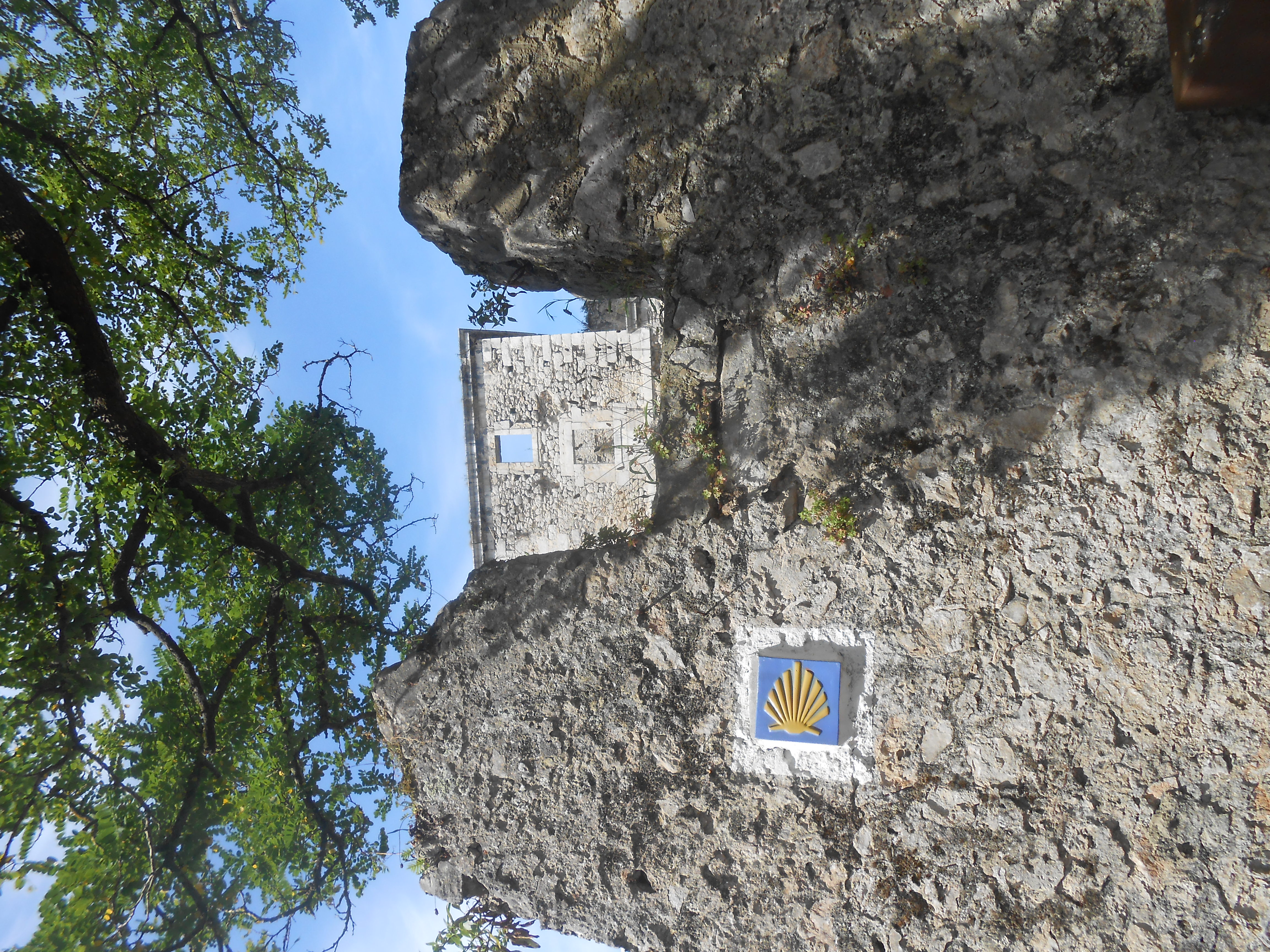
Ancient city walls and the shells of historical buildings on the Camino de Santiago
Old and new-world charm
The charm of some of these old places is that the artists and designers who help to design them and leave their mark often slip something modern and arty in, which adds a little extra mystique. Llanes is clearly no different. In and around the basilica, you may notice some writings on the ground. These take the form of little metal plaques blended into old-world pavements and contain little engraved phrases.
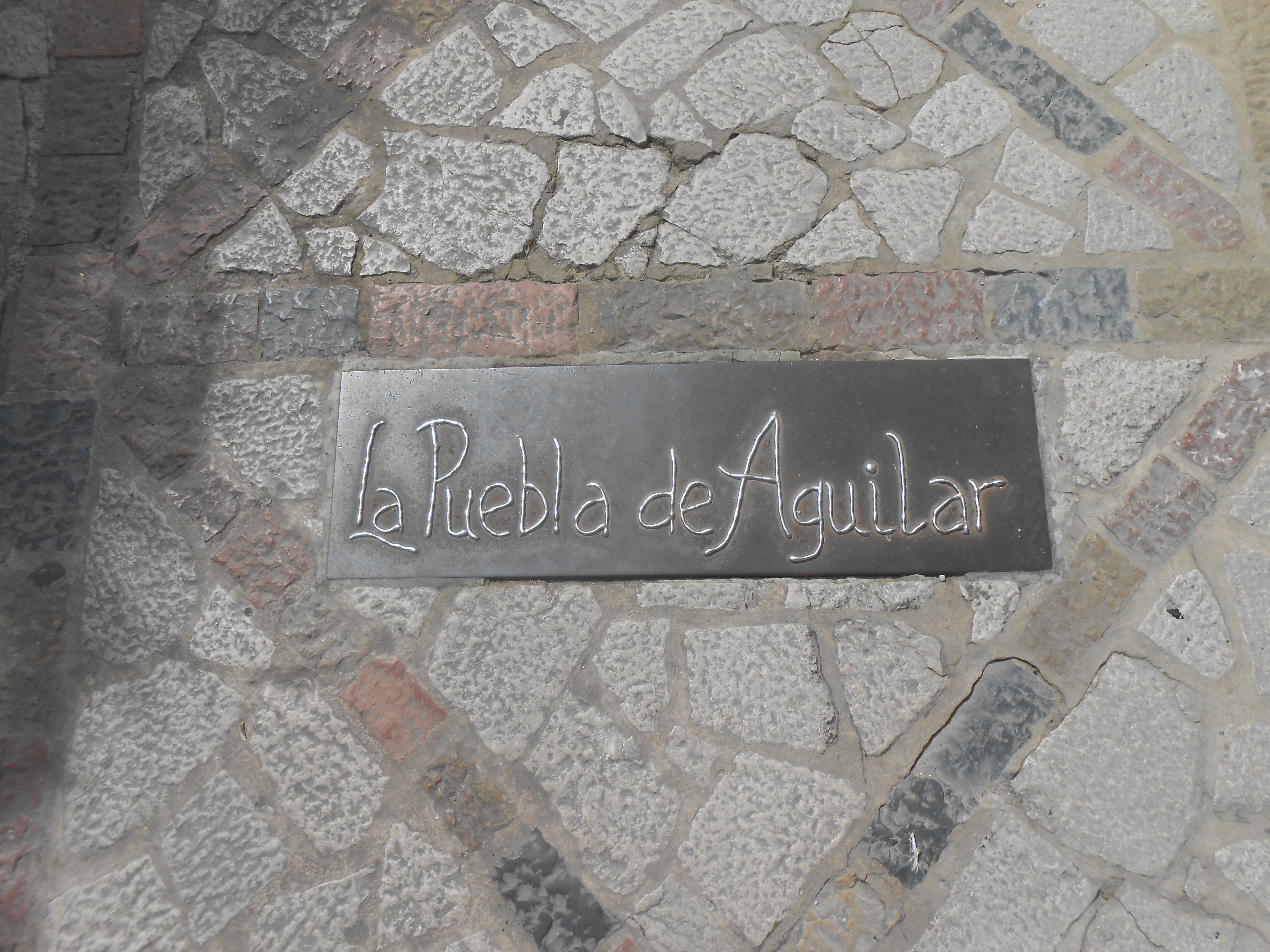
Metallic messages between the cobbles of the old town of Llanes
A junction between westward and eastward gateways
All in all, you can spend a good few days here enjoying a range of activities. You have seaside swimming and sun worship to following historical trails, all the while enjoying the local cuisine. Don't forget the natural surroundings towering over the place from the southern mountain ridge. Llanes also acts as an effective gateway to the western lands of Asturias. Just westward is the village of Ribadesella, sitting on the River Sella, a place known for watersport activities. Further on, Asturias boasts the bigger cities of Oviedo, Gijón and Áviles. These are close to an international airport, often mislabelled as Oviedo Airport but it is actually closer to lesser-known Áviles.
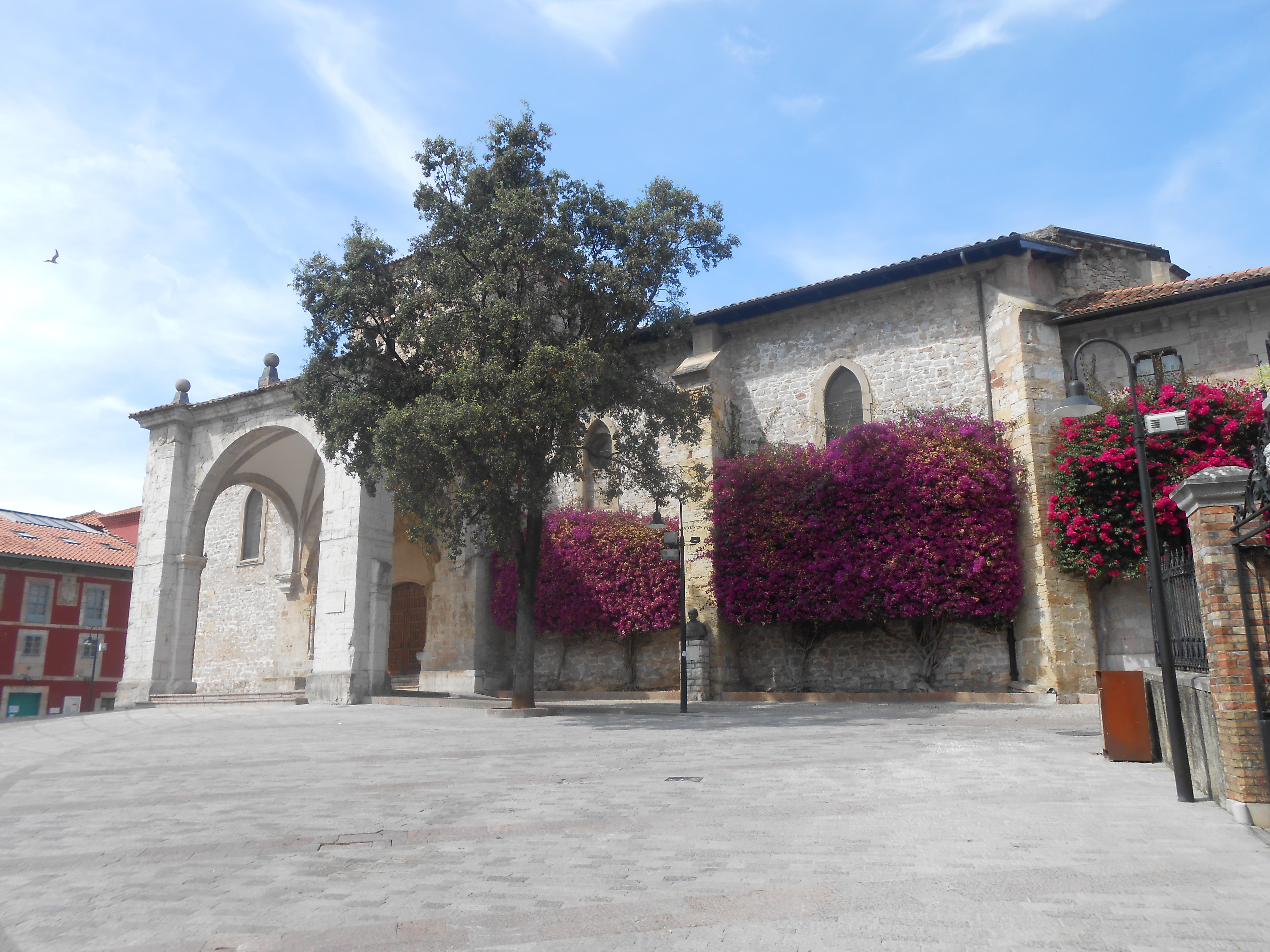
Basílica de Santa María de la Asunción
The eastern end of the region though, does itself proud with scenery, activities and hospitality. Llanes is especially worth a visit, be it by car, train or even plane. Consider too that the city of Santander isn't so far away and also boasts an international airport.
